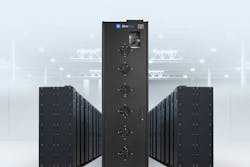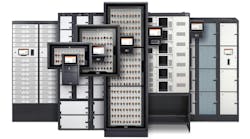Improving Data Center Profits with Compact and Safe Backup Batteries
Data centers need to support increasing customer demand for more data, faster service, AI, IoT, digital content, and hybrid cloud solutions, which requires more equipment to increase capacity. But the larger the data center's footprint, the more expensive it is to manage and maintain. To maximize profitability, it's essential to do more with less space.
Maximizing physical space leads to more efficient operations. Data centers categorize space into "white space," which includes equipment that increases capacity and generates profits, and "gray space," which includes back-end support systems that do not directly generate profit. Minimizing gray space with smaller, power-dense equipment allows operators to maximize the profit-driving white space. Upgrading to more efficient infrastructure equipment can be costly initially but leads to significant reduction in total cost of ownership (TCO).
Upgrading to a UPS battery system with a smaller footprint is a great place to start. You can choose a UPS battery with a smaller footprint to minimize gray space and create more white space. It is advisable to look for a battery cabinet with the smallest linear footprint so that you can use more power in a smaller space. By selecting batteries with higher power density, you can reduce the number of required battery cabinets, which creates more room for additional servers or a smaller facility.
For example, modular data centers can reduce the footprint and cost of containerized electrical rooms by using smaller, more power-dense equipment. Modular data centers offer flexibility, scalability, faster and more cost-effective construction, better quality, and greater customization. They can be deployed in almost any location and can be added to over time, allowing for real-time alignment with capital and operational resources. They are built and tested in the factory, providing more consistent quality and lower cost. They also allow for more customization, with owners able to mix and match components to meet their needs and adapt to cost, space, and other considerations. In addition, a modular design supports sustainable construction and operation of a data center since components are only added when needed.
In addition to having a small footprint, non-flammable battery chemistries like nickel-zinc eliminate the need for additional safety equipment, permitting, and space requirements of lithium-ion batteries, reducing the footprint of batteries even further. Nickel-zinc batteries are safe and non-flammable – they don’t exhibit thermal runaway. They can reliably deliver more power faster, at high temperatures, and do it safely, year after year. Compared to lead-acid and lithium chemistries, nickel-zinc batteries’ greater safety lowers energy storage infrastructure as well as costs for battery shipping and installation. This safety advantage delivers savings in materials, lower shipping weight, no transportation restrictions, and ability to ship energy storage systems completely assembled.
For instance, the ZincFive UPS battery cabinet offers an industry-leading footprint with the smallest cabinet and fewest cabinets per megawatt, while providing the same amount of power as larger lithium and lead-acid battery solutions. With an 84" linear width, ZincFive UPS battery cabinets can deliver 1250kW of power, compared to lead-acid and lithium batteries, which require 65% and 45% more width respectively to provide the same amount of power.
This not only saves space in the data center for equipment that generates revenue but also makes shipping, installation, and maintenance more straightforward. Additional space can be used for revenue-generating equipment, such as installing more servers or other IT equipment, resulting in higher profits.
Using smaller, more efficient equipment helps data centers save energy costs, reduce overall carbon footprints, and offer more affordable, sustainable services, which is a significant advantage in attracting and retaining customers in an increasingly competitive industry.
Tod Higinbotham, COO of ZincFive. Contact them to learn more about their UPS battery cabinets.



